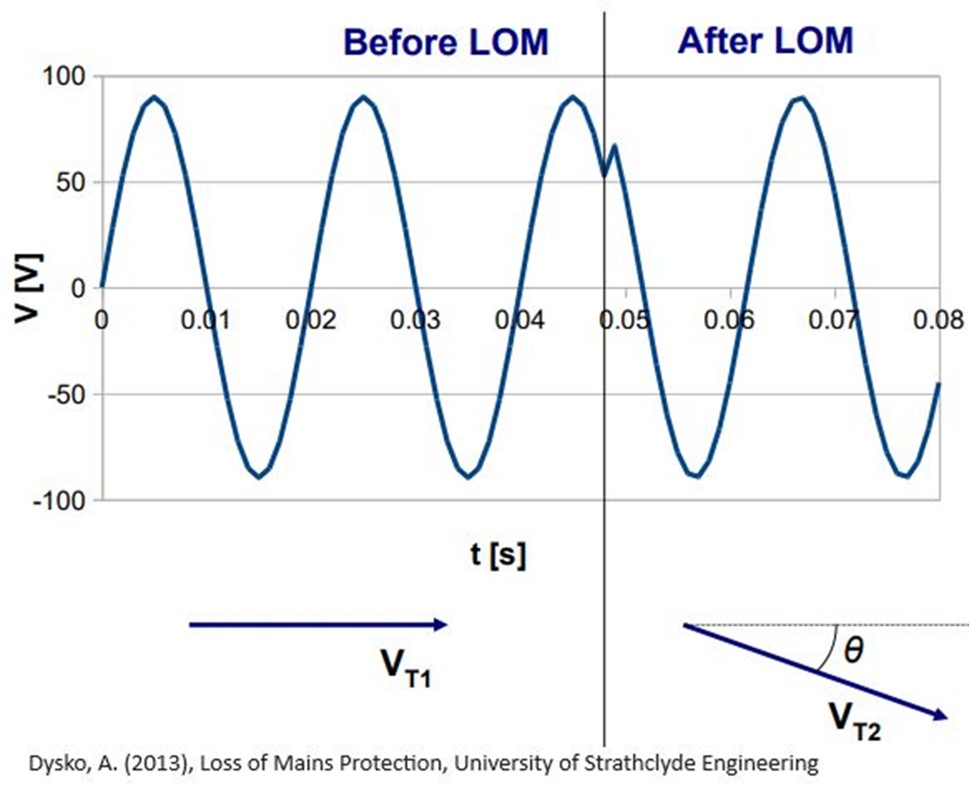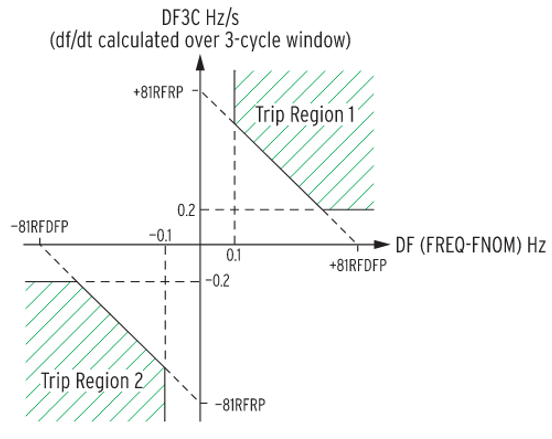Two Passive Detection Techniques for Islanding
Distributed generation is a growing trend that is creating challenges for distribution networks of islanding and 2-way power flow in networks that were originally designed for centralized generation. This article will focus on one of these challenges, islanding.
What is islanding?
Islanding is when a portion of the distributed network becomes disconnected from the rest of the network. The broad utility consensus is that this is a safety issue and that the islanded system should be detected and powered down.
How do we detect these islands passively?
This blog will focus on two passive methods for detecting islanding, vector shifting, which focuses on the phase angle of the voltage, and rate of change of frequency (ROCOF), which, surprise, focuses on frequency mismatch caused by mismatch of load and generation in the system. These are two protection elements Delta Wye Engineering is implementing in a utility interconnection relay. Below these two elements are discussed in further detail.

What is the protection element "vector shift" (ANSI 78)? Not to be confused with generator out-of-step, vector shift is a separate element with a completely different operating philosophy. Is it used to detect islanding on distributed generation (DG), commonly complemented with Rate of Change of Frequency (ROCOF) protection to create a robust system to detect islanding.
Essentially, vector shift protection looks at changes in the voltage vector that occur over a 1/2 cycle. The chart below shows this the most clearly. for islanding events, the change in the voltage vector will be related to the difference in power between the DG export and the local island being created. The larger the mismatch, the larger the vector shift. If there is no mismatch (i.e. the breaker opens with no real or reactive power flowing across the tie), then the voltage vector would not change, and this element would not detect the islanding condition.
A common setpoint for threshold angle is 10°, this will be the default setting in many relays, however, depending on the system a larger or smaller angle may be required. The cost of a smaller pickup angle being that of a greater chance of false positive detections of islanding resulting unnecessary tripping of breakers.
A shortcoming of this element is that short circuit conditions can cause the voltage angle to change to exceed the pickup threshold, to avoid this issue many relays offer a supervision threshold that disables this element in the case of an undervoltage condition.

ROCOF examines the frequency over time, the principle behind its operation is that to have grid stability a balance between load and generation must be present, if this is not the case the frequency will either rise or fall depending on if the system has excess or lack of generation. In the situation of islanding, load and generation mismatch is likely, and thus can be used as a strategy to detect islanding. However, it is to be noted that if an island has matching load and generation then the system will not detect the island. Shown below is an equation to determine the value ROCOF value in Hz/sec based on the change in generation, the system frequency, the generators’ MVA. ratings, and the inertia constant of each generator.
dF=fdP/2HS
Additionally, there can be momentary dips in load requirements that result in a fluctuating frequency that may fall into the trip region but does not mean an islanding event, to mitigate this issue a pickup delay can be implemented which is typically dictated by utility requirements.
The emergence of distributed generation poses significant challenges to traditional centralized power distribution networks, particularly in addressing the complexities of islanding and bidirectional power flow. This blog has delved into two passive methods for islanding detection: vector shifting and rate of change of frequency (ROCOF). Both vector shifting and ROCOF represent essential components of modern protection systems, contributing to the resilience and efficiency of distributed generation integration. As utilities navigate the evolving landscape of distributed energy resources, employing protective mechanisms like vector shifting and ROCOF becomes imperative for ensuring grid reliability and safety in the face of islanding challenges.
